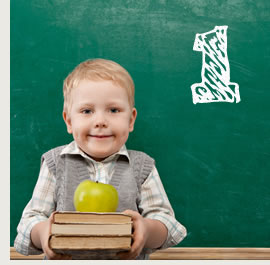|
|
|||||
|
|||||
| Why Finland tops global preschool ranking | |||||
|
The Starting Well index ranked Australia in position 28, well below countries such as New Zealand (position 9), the UK (position 4) and the USA (position 24). This is not to suggest that Australia doesn't have high quality preschool programs but it does show that preschools in Australia are not readily available or affordable to all sectors of society and minimum quality standards may vary. With implementation of the NQF and the government's commitment to universal preschool access Australia's ranking will probably improve when the next index is published, but we thought it might be interesting to take a look at the preschool system in the top ranking country Finland. In Finland, preschool refers to a year of free half-day classes for six-year-olds, which is complemented with day care for the other half of the day. This builds on a programme that gives parents access to full-day child care from birth till the age of six, at a capped cost. The overall system has been developed since the 1960s to support the participation of women in the workforce. Today, it incorporates a range of rights for children: all have legal access to child care, comprehensive healthcare, and local preschools. To ensure quality, Finland has systematically developed teaching as a professional career. Teachers have to attain high university qualifications: all have a three-or four-year bachelor's degree in education, while many complete a master's degree (from primary level on, a master's degree is required). Studies are typically academic research-based courses at high-end universities, with detailed courses on curriculum planning and design, as well as leadership. Teachers are accorded the same respect as other professionals, such as lawyers, with comparable working conditions. Wages are good—although by no means the highest among the countries in this Index—and class ratios are low with an average of 11 pupils per teacher. All this helps Finland take a light touch when it comes to testing and monitoring, given the strong institutional trust in teachers. "This is why we have been deliberately staying away from the unnecessary standardised testing, or unnecessary external inspection of our schools," explains Dr Pasi Sahlberg, a Finnish education expert and director general of Finland's Centre for International Mobility and Cooperation. It also allows Finland to delegate authority over curriculum planning to teachers. Indeed, trust is so high that this in turn can raise new challenges: Dr Sahlberg notes that more work is needed to educate parents about their own responsibilities in raising children, lest they assume that teachers will do it all Quality Indicators The Starting Well index found that the preschool environments of the highest ranking countries can be characterised by:
Read more about the Starting Well index. |
|||||
|
Share your views
comments powered by Disqus
|
|
|||||||||

 A recent research project ranked the preschool environments in 45 countries assessing the extent to which the Governments provide good, inclusive early childhood education particularly in terms of availability, affordability and quality of their preschool environments. The researchers examined the preschool markets in OECD countries as well as the major emerging markets.
A recent research project ranked the preschool environments in 45 countries assessing the extent to which the Governments provide good, inclusive early childhood education particularly in terms of availability, affordability and quality of their preschool environments. The researchers examined the preschool markets in OECD countries as well as the major emerging markets.